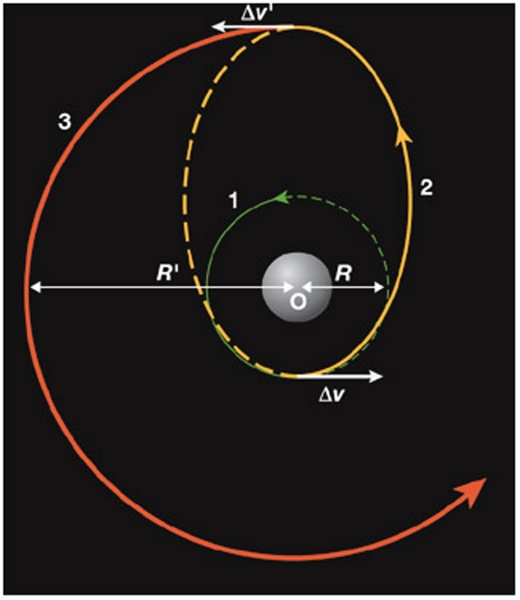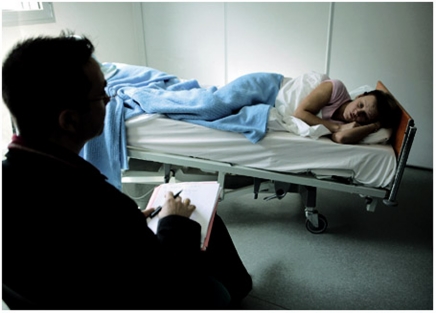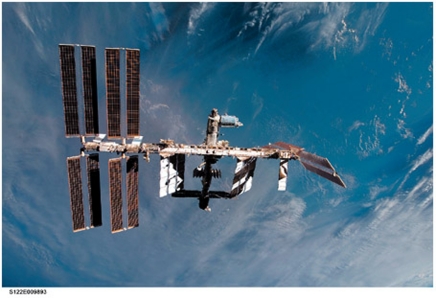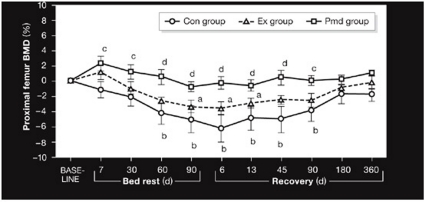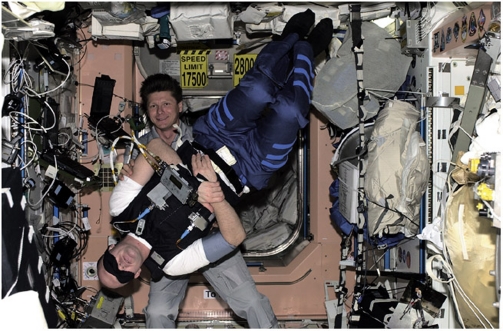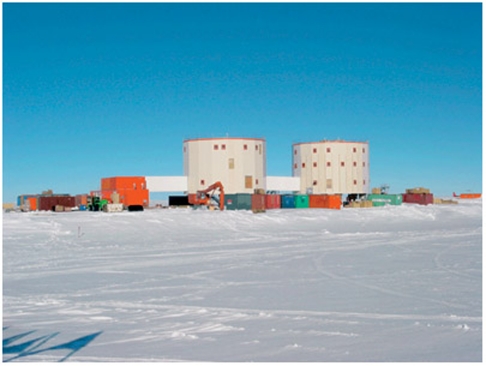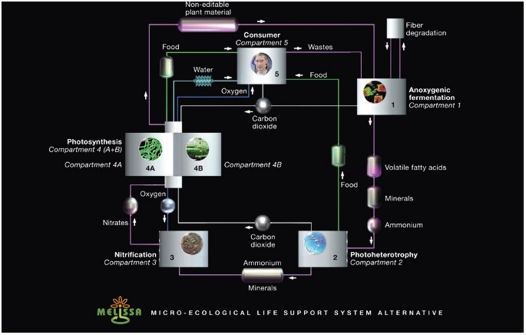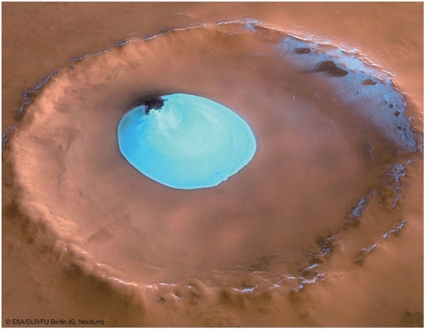On 12 April 1961, the Russian cosmonaut Yuri Gagarin (1934–1968) became the first human to leave the confines of Earth and ascend into space. Almost 480 individuals have followed him and, since 31 October 2000, humans have been in space without interruption. This is an enormous technological and scientific achievement; nevertheless, our species has only scratched the surface of what could be called space travel. So far, just 24 humans (during the US Apollo space programme that took astronauts to the Moon) have ever left direct low-Earth orbit (LEO)—that is, have gone further than approximately 500 km above the surface of the Earth.
Despite these successes, it has not been shown yet whether and how humans can really travel and live in space. Yet, why would we want to leave the Earth and where would we like to go? In fact, where can we go and what technologies do we need to get there? Here, I try to give some general answers to these questions, based on the present scientific and technological status quo, and on current or planned studies. Nonetheless, the further we look into the future, the more speculative this article will inevitably become. In this regard, I can only offer my personal assessment of what might sound, at times, like science fiction.
There are various reasons why, as a species or individually, we might want to travel into space. Curiosity is probably the best one: exploration is, metaphorically speaking, in our genes. In 1923, when he was asked why he wanted to climb Mount Everest, George Mallory (1886–1924) answered famously “because it is there”. One year later, Mallory perished during his—possibly successful—attempt to reach the summit, which just goes to show that humans are ready to accept great risks in order to go where no one has gone before. Another emotive reason is the irresistible urge to leave the confines of the Earth and to explore “this new ocean”, to coin the phrase used by US writer William Burrows. The enormous amount of science fiction space-travel literature, television programmes and films is testimony to this human fascination with space.
The desire for scientific knowledge is one expression of this human curiosity that most scientists will recognize. Space travel might help us to answer some intriguing questions such as how was the Earth created, why did the climates of three similar planets—Venus, Earth and Mars—develop in such different ways and, ultimately, are we alone or are there other life forms in the universe?
…why would we want to leave the Earth and where would we like to go? In fact, where can we go and what technologies do we need to get there?
To answer these questions, robotic exploration alone is not sufficient. Although this debate is not yet settled, many scientists acknowledge that humans are needed to perform more complex research tasks such as field geology or the acquisition and analysis of geological samples (European Science Foundation, 2008). The astronauts of the Apollo 17 mission covered a total distance of 39 km on the surface of the Moon in 3 days, carried out a range of geophysical experiments and collected 110 kg of lunar samples for further analysis on Earth. In comparison, the most recent National Aeronautics and Space Administration (NASA) rover on Mars managed to cover 4 km in 1 year of operation (Crawford & Cockell, 2005).
The enormous amount of science fiction space-travel literature, television programmes and films is testimony to this human fascination with space
There are, of course, other more down-to-Earth reasons for seeking the stars, such as national prestige, geopolitical arguments—that is, getting there first—and technological and industrial development. Even the tourist industry has begun to recognize space as an interesting destination for the wealthy. Several individuals have already paid for a visit to the International Space Station (ISS) and entrepreneurs in various countries are investing in space systems, including future space hotels, with the expectation that this will become a new market. Finally, there are those who believe that the Earth will not be a safe place for human habitation in the long term, and that through either man-made disasters or natural catastrophes, we will be forced to look for other planets to colonize.
In order to investigate the potential destinations of future space travellers, we need to address some basic orbital mechanics and energy calculations. For the moment, we shall restrict our horizon to targets within our Solar System. Simply put, in order to move from the Earth to the Moon or to another planet, we need to consider the energy required to reach the destination, the overall time needed to travel there, and the characteristics and environmental conditions of the destination. These factors determine all other parameters in the design of a space mission—including the amount of consumables required, protection against radiation, the possibility of using local resources, such as water, and, ultimately, the technological solutions and architecture of a spacecraft.
To characterize further our hypothetical trip, let us examine the first two factors in more detail. The energy required to go from the Earth to another planet is basically determined by the following: the need to leave the potential energy well of the Earth—the so-called escape velocity—the need to reach a stable transfer orbit around the destination planet and the need to decelerate again to reach the surface of the destination planet with a safe velocity.
Each of these steps is characterized by a parameter called Δv, which describes the velocity change required to carry out orbital manoeuvres in space. Obviously, such a velocity change can be achieved only through acceleration of the vehicle, and is therefore a direct function of the efficiency of the propulsion system and the total mass of the spacecraft. It is important to understand that any increase in Δv will have an impact on the mass of the space vehicle. Simply put, increasing the total velocity of the vehicle will require additional fuel, which, along with its container, will also have to be accelerated, thereby leading to even higher fuel requirements. The net result is an exponential relationship between the ratio of useful to total vehicle mass and the effective Δv, which is called the Tsiolkovsky relation—named after the Russian scientist Konstantin Tsiolkovsky (1857–1935). As an example, the take-off mass of Apollo 16 was almost 3,000,000 kg, whereas the mass of its lunar module was only about 5,000 kg.
Space travel might help us to answer some intriguing questions such as how was the Earth created […] and, ultimately, are we alone or are there other life forms in the universe?
The orbit with the most interesting characteristics is one in which the space vehicle makes optimal use of the relative orbital velocities of the two planets (Fig 1). The transfer time of a so-called Hohmann transfer orbit depends on the orbital radii and the mass of the star around which it is plotted. Going faster is possible but requires additional Δv, whereas less energy-dependent trajectories will lead to longer travel times.
Figure 1.
Hohmann transfer orbit from planet 1 with orbital radius R to planet 2 with orbital radius R′.
Table 1 presents some parameters defined for destinations in our Solar System. With our current technology, we are restricted to Mercury, Venus, the Moon and Mars. Looking at the atmospheric pressure, composition and surface temperature of Mercury and Venus, it is clear that these are not favourable places for human settlement, leaving only the Moon or Mars in the near future.
Table 1. Some specific parameters of our Solar System.
| Mercury | Venus | Earth | Moon | Mars | Jupiter | Saturn | Uranus | Neptune | |
|---|---|---|---|---|---|---|---|---|---|
| Distance from Sun (million km) | 57.91 | 108.20 | 149.60 | [0.38] | 227.90 | 778.30 | 1,429.40 | 2,871.00 | 4,504.00 |
| Diameter (km) | 4,800 | 12,104 | 12,756 | 3,476 | 6,787 | 143,800 | 120,660 | 51,120 | 49,560 |
| Density (× 1,000 kg/m3) | 5.44 | 5.25 | 5.52 | 3.34 | 3.93 | 1.30 | 0.69 | 1.28 | 1.64 |
| Orbital period (days/years) | 88.0 d | 225.0 d | 365.0 d | 27.3 d | 687.0 d | 11.9 y | 29.5 y | 84.0 y | 165.0 y |
| Rotation period (days) | 59.00 | −243.00 | 1.00 | 27.30 | 1.03 | 0.41 | 0.43 | 0.72 | 0.73 |
| Gravity at equator (g) | 0.38 | 0.90 | 1.00 | 0.16 | 0.38 | 2.64 | 1.14 | 0.92 | 1.15 |
| Mean surface temperature (°C) | 167 | 464 | 15 | −153 − +107 | −63 | −108 | −139 | −215 | −205 |
| Surface atmospheric pressure (bar) | – | 92.000 | 1.010 | – | 0.001 | 0.700 | 1.400 | 1.200 | 1.300 |
| Surface composition | Basaltic | Basaltic | Basaltic/H2O | Basaltic | Basaltic | – | – | – | – |
| Atmosphere composition | Na | CO2 | N2/O2 | – | CO2/N2/Ar | H2/He | H2/He | H2/He/CH4 | H2/He/CH4 |
| Number of moons | 0 | 0 | 1 | − | 2 | 63 | 60 | 27 | 17 |
| Hohmann transfer time (days) | 104.62 | 144.87 | − | [3] | 256.71 | 989.28 | 2,196.05 | 5,810.42 | 11,110.96 |
We can now turn from technical and physical considerations to the biological and physiological aspects of space flight. We can discriminate further between the effects caused by weightlessness, radiation, isolation, mission-related stress and healthcare on biological processes at the cellular level, the function of organs and the body as a whole, and the cognitive and mental state of health.
The effect of gravity and weightlessness on biological, animal and human systems is studied using a range of tools. Some valuable results can already be obtained in ground-based simulations of weightlessness, such as so-called head-down-tilt bed-rest studies (Fig 2). The European Space Agency (ESA) has advanced expertize in such research, and recently completed long-duration studies of up to 90 days of continuous head-down-tilt, to investigate the effects and possible physical or pharmacological countermeasures against simulated weightlessness. Beyond that, real weightlessness can be obtained through various techniques, ranging from drop towers and parabolic aircraft flights, to sounding rocket missions, unmanned orbital capsules and, finally, onboard the ISS. Fig 3 shows the ISS, including the ESA Columbus module launched in February 2008, which is equipped with advanced research facilities for, among other things, biological and physiological research in space.
Figure 2.
Participant in the 60-day head-down-tilt bed-rest study organized in 2005 by the European Space Agency, National Aeronautics and Space Administration, and the Centre National d'Etudes Spatiales at the French Institute for Space Medicine and Physiology in Toulouse.
Figure 3.
International Space Station in February 2008, with the recently attached European Space Agency Columbus module visible at the front left.
Contrary to initial hypotheses, which were based on the small magnitude of the gravitational potential across distances of several microns, weightlessness has been shown to influence molecular processes that determine the functionality of individual cells. In the specific case of plant roots, the mechanism of sensing gravity, transmitting the signal through the cytoskeleton and the subsequent changes in gene expression cause local changes in the growth rate of the root walls, which determine the curvature of the root in the direction of the gravity vector (Friml et al, 2002; Perbal & Driss-Ecole, 2003). Our knowledge of how mammalian cells sense gravity is less developed, but the effects of weightlessness on signal transduction, gene expression and the subsequent effects on cell division or functionality have already been documented. Well-known effects include an increased proliferation rate of several bacteria (Häder et al, 2005), a reduction in lymphocyte production (Cogoli, 2002) and a change in bone turnover (Marie et al, 2000; LeBlanc et al, 2000; Scheld et al, 2001).
Given the effects at the cellular level, it is clear that the state of the human body will change during space flight. One visible effect is the ‘puffy face' of astronauts during the first days after launch, which is caused by the redistribution of body fluids from the lower extremities to the head. Interestingly, the body adapts relatively quickly and reaches a new equilibrium, which is characterized by different hormone levels and the altered function of the cardiovascular system. The loss of calcium and overall bone mass begins rapidly after exposure to weightlessness at a rate of up to 1–2% of total bone mass per month, which is 10–15 times faster than in the most severe case of osteoporosis. Fig 4 shows this effect in a recent bed-rest study, which also showed the long recovery time of more than one year after a return to normal conditions (Watanabe et al, 2004). Muscle mass is also affected, although the recovery rate is faster (DiPrampero & Narici, 2003).
Figure 4.
Evolution of bone-mineral density in the femoral neck. BMD, bone mass density; Con, control; d, days, Ex, physical exercise; Pmd, Pamidronate (pharmacological counter-measure group; Watanabe et al, 2004).
The equilibrium system, and in particular the semicircular canals, comprise a motion-detection system to measure the motion of fluids caused by gravity force and angular acceleration of the head. Without the gravity vector, the output of this system is different and at odds with other visual or proprioceptive clues (Clarke et al, 2000). The net result can range from mild disorientation to severe space sickness in the first days of space flight. Again, the human body is able to adapt to the new environment and the effects generally disappear after a few days (Fig 5). Visual inputs gain an even greater importance; many studies use this effect to look into the specific mechanisms of image processing, orientation and the interaction with other proprioceptive signals. Of practical importance are tests that look into the ability of the crew to perform complex tasks such as manipulating equipment or docking and landing procedures (Viguier et al, 2001).
Figure 5.
European Space Agency astronaut André Kuipers (inverted) being assisted by Russian cosmonaut Genadi Padalka during an experiment on proprioception onboard the International Space Station in 2004.
Detailed studies have also investigated lung ventilation during weightlessness by monitoring the composition of exhaled air with or without premixed gaseous additions. The results have led to a change in the understanding of the process of gas exchange in the lungs, in particular by invalidating the assumed effect of gravity on the ventilation and perfusion ratio in the lungs (Verbanck et al, 1996). Further studies are looking into the potential risk of lung inflammation owing to the inhalation of floating particles or exposure to a reduced-pressure environment such as in spacesuits. Finally, various studies are investigating the efficiency of different countermeasures, in particular drugs, nutrition or food supplements, exercise and centrifugation (Rittweger et al, 2005; Heer et al, 2004; Stein et al, 2003; Vermeer et al, 1998; Alkner & Tesch, 2004; Iwasaki et al, 2001).
At first glance, the effects of weightlessness on the human body seem to be impressive and to present a potential problem for human space flight. The most remarkable outcome of these studies, however, is our understanding of the ability of the human body to adapt to the new environment. After a few days of space flight, most adverse effects are usually compensated for and humans are able to survive well in space for prolonged periods of time. After a few weeks, the situation of weightlessness has almost become as natural to the body and mind as the normal Earth environment. In fact, humans have survived in space for extensive periods of time. The current record holders are Valery Polyakov, who spent 438 days continuously in space, Sunita Williams, the woman who has spent the longest continuous time in space of 195 days, Sergei Krikalev, who spent 804 days in space in total, and Anatoly Solovyov, the record holder for the longest extra-vehicular activity of 78 h. Given their experiences and the results of numerous scientific studies, the effects of weightlessness on the human body will probably not be a major problem for a flight to Mars. Remaining concerns focus on the loss of bone mass, which is relatively pronounced and has a long recovery time, and the ability to perform complex tasks during periods of gravity changes, directly after launch, and during and after landing on Mars.
Even the tourist industry has begun to recognize space as an interesting destination for the wealthy
There is, however, the more serious problem of radiation in space. So far, only 24 Apollo astronauts have ever travelled beyond the first 400–500 km of LEO, in which the magnetic field of the Earth deflects a significant fraction of the radiation in space. Beyond the Van Allen radiation belt—where charged particles are trapped in the magnetic field of the Earth—astronauts are exposed to both solar radiation and cosmic background radiation. The intensity of solar radiation, which consists mostly of protons, varies with the solar cycle of about 11 years, but can increase markedly during solar flares to reach lethal levels. In August 1972, just a few months after the Apollo 16 mission, a particularly vehement solar eruption took place. Had this solar flare happened a few weeks earlier, the Apollo 16 crew would have received an estimated 400 rem of radiation, and their safe return to Earth would have been unlikely. Fortunately, shielding colonists from proton radiation will be relatively easy—a reasonably thin layer of water, or lunar or Martian soil would provide sufficient protection. Combined with the transient nature of solar flares, we could devise efficient protection strategies.
After a few days of space flight, most adverse effects are usually compensated for and humans are able to survive well in space for prolonged periods of time
Cosmic background radiation consists of the nuclei of heavier atoms, such as iron, which have been spewed out from stellar-fusion processes and supernova explosions. Although the intensity of cosmic radiation is not particularly high, shielding against it is much more complicated, and exposure to it on unprotected Mars would be almost continuous. The effect of a heavy particle penetrating an organism can also be much more severe than the impact of a proton because it creates a track of ionization up to several millimetres in length, and the biological effects are still poorly understood.
Neither the Moon nor Mars has magnetic fields or dense atmospheres that could attenuate the radiation effects. Therefore, we need more knowledge about the effects of solar and cosmic radiation. To this end, the ESA is initiating a series of studies in collaboration with the Heavy-Ion Research Institute in Darmstadt, Germany, to quantify the effects of heavy-ion radiation on cells and model organisms. The results of these studies will help to predict the effects on humans, and might lead to risk assessments and mitigation strategies.
A mission to Mars and back following a Hohmann transfer orbit will take a minimum of 520 days, of which roughly 1 month will be spent on the Martian surface and the rest will be spent in transit. At its furthest, the crew will be some 360 million km away from home, which is more than 1,000 times further than the Apollo astronauts. From this distance, the Earth will be only a faint dot in the sky, and communication delays might be as much as 20 min in one direction—that is, almost three-quarters of an hour before a reply can be expected. In some configurations, the Sun will be in the line of sight between Mars and the Earth, and visual contact and communication are unlikely to be possible. Clearly, the crew on a Mars mission will have to achieve an unprecedented level of autonomy and teamwork.
During the mission, the crew will experience various forms of stress. These will include increased noise, limited privacy, limited contact with family or friends, prolonged confinement, small crew size, increased expectations of performance and risks from equipment failure or fatal mishaps. From studies such as those described previously, it is becoming clear that not all of the physiological changes that the crew will face will come from the situation of weightlessness. Increased stress levels can influence the human immune system, blood-pressure regulation and the circadian rhythm (Choukèr et al, 2002). It is not so much the effects themselves that are unknown, but more the quantification of the stress levels during a space mission itself.
It is difficult to predict exactly when such a mission [to Mars] could launch but, in technical terms, some 15–30 years—depending, of course, on the funding—should be sufficient
A long-term space flight will also pose a multitude of health risks: not only those associated with space flight, such as radiation effects or muscle atrophy, but also those from common diseases that might cause specific problems in the context of a long space trip. In the case of a serious medical emergency on the ISS, we can transport a crew member back to Earth in a matter of hours; a mission to Mars offers no such possibility of return other than the nominal flight schedule. This has an impact on every stage of the mission from screening crew members for potential health risks to preventive medical treatment, training at least two crew members in routine anamnesis and treatment, the selection of medical supplies—even the amount of aspirin, for example, will have to be determined in advance—and including a small operating theatre, possibly with tele-assisted diagnosis and surgery.
Another health risk will be posed by the development of pathogens in a closed environment where waste, water, air and food will be recycled to a large extent. The possibility of the genetic mutation of bacteria by radiation or other environmental factors also has to be taken into account. Finally, specific health risks might be encountered on the Martian surface, such as dust, chemicals or even, in extremis, unknown organisms such as viruses, yeasts or bacteria. New monitoring and protection techniques will have to be developed to keep such risks under control.
The enormous distance and long travel time to Mars will also affect mental health and performance. Studies are underway to investigate factors such as individual psychological health, interpersonal relations in a small group including different cultural backgrounds and language problems, leadership and teamwork, monotony and loneliness. In order to study the effects of long isolation, the ESA is performing studies in ground-based environments—for example, in the French–Italian Antarctic station Concordia (Fig 6). Owing to its isolated location—more than 1,000 km from the nearest coastline—and small crew size of 16, the conditions at this base are comparable to those on a Martian mission. For 9 months of the year, the base cannot be reached by any vehicle and the crew is totally isolated.
Figure 6.
Concordia station, Antarctica, used by the European Space Agency for research into the medical and psychological effects of isolation, and also as a realistic test bed for waste-water recycling.
Another study that will start in 2008 is the so-called Mars-500 isolation study, which will be carried out in cooperation with the Russian Institute for Biomedical Problems in Moscow. The final objective is the complete simulation of a Mars mission with six crew members, who will be enclosed for 520 days in a spacecraft-like complex. With the exception of real space travel, radiation and weightlessness, all important aspects of a Mars mission, including communication delays, will be simulated, and a multitude of medical and psychological protocols will be carried out. The Concordia base and the Mars-500 studies are, in a way, complementary to each other. Concordia is a real research environment with physical isolation and is therefore more realistic—but the environment is not well suited for testing all types of protocols and simulated emergencies because they might interfere with the operational aspects of the base. Mars-500, by contrast, is a simulation and the participants will remain aware of that. Although this might influence the study, the environment is much more controlled and, for that reason, the data will be easier to interpret.
Apart from the health-related aspects of a Mars mission, some basic requirements will also need to be met to sustain the crew, such as water, oxygen and food. Table 2 shows the daily requirements on the ISS, assuming that most of the oxygen will be generated from the electrolysis of water. For a 520-day mission with a crew of six, fulfilling these requirements as is done on the ISS would add as much as 27,000 kg to the mission weight, and would therefore become the main challenge for spaceship design. This obviously means that, for Mars, the recycling of waste back into air, water and food will be required to keep the total mass of the mission under control. The ESA is already developing several solutions to this problem. One is a wastewater-recycling system based on nanofiltration and reverse osmosis, which is now being used at the Concordia base in Antarctica. It can recycle about 40,000 l of water per year, with a recycling efficiency of approximately 90%. A more complete system would be based on a bioregenerative cycle in which water, air waste and food channels are combined. A prototype of such a system, called the micro-ecological life-support system alternative (Melissa) is now under construction (Fig 7).
Table 2. Crew consumables used on the International Space Station.
| Item | Mass (kg/crew) |
|---|---|
| Drinking water | 1.50 |
| Food water | 0.50 |
| Metabolic water | 0.35 |
| Hygiene water | 1.00 |
| Water for oxygen supply | 1.00 |
| Cooling water | 0.85 |
| Food | 2.00 |
| Crew items | 1.00 |
| Other | 0.40 |
| Total | 8.60 |
Figure 7.
Schematic of the Melissa bioregenerative life-support system under development at the European Space Agency.
So far, I have analysed the requirements of a human mission to Mars. Although there is a lot of research still to be done, the scientific and technological challenges are not an absolute showstopper. It is difficult to predict exactly when such a mission could launch but, in technical terms, some 15–30 years—depending, of course, on the funding—should be sufficient.
In the final part of this article, I consider how we can go beyond Mars and whether humans can have a future in space—ranging from nearly realistic ideas to speculations that are more closely related to science fiction than reality. As mentioned above, it is not unlikely that space tourism will become a reality during this century. The first four tourists have already ventured into space on a commercial 10-day trip to the ISS, at an estimated cost of about US$20 million per person. Unlike the funding of lunar or Martian exploration, private investors will take the lead in this domain. Commercial operators, such as Virgin Galactic, are developing lower-cost solutions to get into space. At present, these focus on suborbital flights at up to 100 km above the Earth, but these companies certainly have more ambitious goals. Construction companies, including Mitsubishi and the Space Island Group, have designed space hotels that could circle the Earth. Marketing studies have shown the viability of such approaches, and estimates of up to 100,000 potential customers are deemed realistic. The most important determining factor in the viability of these enterprises is the launch cost per kilogram, which is currently about $30,000, but future commercial developments might be able to lower those costs.
Space agencies are also carrying out detailed design studies for a permanently inhabited base on the Moon; the US Space Exploration Vision, for example, which was announced in January 2004 by President George W. Bush, foresees such a base becoming operational in the 2020s. There are still some technological challenges to be overcome, in particular, those related to protection against radiation and supply. These need further study, including exploring subsurface construction and using local resources for supply. Nevertheless, the technological solutions are within reach and it is more a question of finding the correct financing. At this stage, these endeavours will be predominantly government funded, but there are some who study and advocate commercial perspectives of the Moon, such as mining tritium for energy production, which could attract private parties.
The main reason for going to Mars would be to gather scientific knowledge or prestige. At this moment in time, it is not clear whether the scientific perspectives warrant a permanent human presence. However, the available time for research on the surface cannot be changed at will for a nominal flight to Mars; it is either about 1 month or almost 1.5 years, as determined by the relative positions of Earth and Mars to allow for a Hohmann transfer orbit. In the first case, the amount of time spent on the Martian surface is less than 10% of the total mission duration, which can be considered wasteful. By contrast, the second scenario will require something similar to a permanent base.
The greater the distance, Δv and the mission duration are, the more supplies will have to be taken along. Some gains can be made by recycling; however, major reductions in launch mass could only be achieved by using materials and resources at the place of destination. For example, lunar or Martian regolith can be used, either in a pure state or after processing, to protect habitation modules against radiation or meteorites. Local soil might also be used as a substrate for food production. On Mars, there clearly is water ice in the polar regions and probably other reservoirs of frozen water underground (Fig 8). Pure oxygen cannot be found on either the Moon or Mars, but it could be produced relatively easily from water by electrolysis. In the absence of water, oxygen might also be produced from carbon dioxide, which is relatively abundant in the Martian atmosphere, or from the regolith itself.
If humans are ever to become ‘travellers of the universe', we will have to devise ways to extend our lifetime and overcome boredom during such trips
Figure 8.
Water ice in a crater near the Martian north pole as imaged by the European Space Agency Mars Express satellite in 2005.
© ESA/DLR/FU Berlin (G. Neukum)
The mass of propellant needed to return to Earth is also important. If one uses a simple hydrogen–oxygen engine, the mass of the oxygen in particular will be important. As outlined above, it is feasible to produce oxygen on Mars and possibly on the Moon; however, there are also more advanced ideas, including producing methane and oxygen from Martian carbon dioxide and hydrogen. Various studies have also looked into chemical processing to produce iron, aluminium, copper and even ethylene from locally available resources. Given the presence of carbon and hydrogen on Mars, such technologies could be applicable. The more complex such procedures are, the more energy they require. The issue of producing energy, either solar or nuclear, will therefore have to be resolved first.
An even more drastic approach would be to terraform Mars to create a breathable atmosphere and a water-based ecosystem in which humans could live without spacesuits or other protection and use standard food-production techniques (McKay & Marinova, 2001). A first step would be raising the Martian temperature, which would trigger the release of solid carbon dioxide at the poles. Raising the temperature by only a few degrees could lead to a runaway effect, as the gaseous carbon dioxide, through the greenhouse effect, will cause higher temperatures and the release of even more carbon dioxide. Several methods are proposed to achieve the initial temperature rise, including the use of large solar mirrors, redirecting meteors towards Mars and adding strong greenhouse gases such as chlorofluorocarbons to the Martian atmosphere. Needless to say, all of these solutions require massive technological developments and will not be available during this century.
The next step would be the creation of an artificial ecosystem. Suitable bacteria—most likely extremophiles—could initiate this, followed by plant life once sufficient water and organics have become available. This would raise the oxygen concentration in the atmosphere, further increase the temperature and finally create a more or less Earth-like environment. However, the total process would require several hundreds of years at the minimum. Of course, such a drastic development is at odds with current ethical values and principles of planetary protection, which state that humans should leave other planetary systems pristine and free from Earth contamination.
To a large extent, the discussions about how to reach Mars or other destinations are based on current propulsion technologies, which are basically chemical in nature. By using more efficient propulsion techniques, we could use faster trajectories than the Hohmann transfer orbit, as the higher energy requirements could be met without serious mass penalties. The two crucial parameters to define a propulsion system are the thrust in Newtons and the so-called specific impulse (Isp) in seconds, which represents the achievable impulse per unit of weight of propellant. The Isp determines how efficient a propulsion system is—the higher the Isp, the less propellant is required to achieve a certain Δv—and the thrust determines how fast such a Δv will be achieved. Table 3 gives some examples of how much Isp and thrust can be achieved with current and future propulsion systems.
Table 3. Performance characteristics of current and future propulsion systems.
| Propulsion type | Specific impulses | Thrust/weight |
|---|---|---|
| Chemical | 200–400 | 0.1–10 |
| Ion | 1,500–5,000 | 1 × 10−4–1 × 10−3 |
| Nuclear fission | 5,000–3,000 | 1 × 10−4–1 × 10 |
| Nuclear fusion | 1 × 104–1 × 105 | 1 × 10−5–1 × 10−2 |
| Antimatter annihilation | 1 × 103–1 × 106 | 1 × 10−3–1 |
Today, chemical propulsion is the most reasonable solution, even if it is not efficient. Ion thrusters, which accelerate ionized heavy gases—most often xenon—in an electric field, are much more efficient but have low thrust and are therefore not practical for human space flight. The ESA Smart-1 mission used only 1 kg of propellant to reach the Moon from LEO, but it took more than 1 year to get there.
Future propulsion systems for human space flight will therefore have to be based on nuclear technologies. Engines that are based on nuclear fission are considered, by most specialists, to be the most promising technology that could become available during this century. Even more promising, on paper at least, are engines in which antiprotons—such as those generated in large-particle accelerators—would be stored in magnetic flasks and made to collide with normal protons. The energy released in such a collision is enormous and could be used to generate huge exhaust velocities at the engine nozzle. Designs for these types of engines do exist, as well as prototype antiproton-storage systems; nevertheless, such systems will require amounts of antiprotons that are beyond current capabilities and it cannot be expected that this technology will become mature within this century.
…it is intriguing to see how human ingenuity is trying to find solutions to make even the most remote endeavour a reality
Even with such engines, the duration of a space trip will be enormous. One-way travel to the Alpha Centauri system—next to our Solar System—would take several tens of years, by the most optimistic calculations, to cover a distance of more than four light years. If humans are ever to become ‘travellers of the universe', we will have to devise ways to extend our lifetime and overcome boredom during such trips. Many science-fiction movies propose ‘hibernation' as a solution to this problem by decreasing the metabolic rate of the body for a long period of time. In fact, space agencies, including the ESA and other research institutes, are doing some studies in this domain. These have identified specific chemicals that trigger hibernation and synthetic derivatives have been shown to be effective in non-hibernating animals (Oeltgen et al, 1998; Vecchio et al, 2003; Ayre et al, 2004). Exposing animals to low concentrations of hydrogen sulphide also lowers the body core temperature and metabolic rate (Blackstone et al, 2005). Clearly, further studies are still required before this could become a solution.
In conclusion, human space travel to destinations beyond the LEO—in particular Mars—are realistic and might be attempted in the next few decades. Important scientific and technological progress is still needed, but the potential solutions are within reach. At the same time, it can be assumed that private enterprises might also engage in human space flight, initially as a form of tourism, but also to commercially exploit the Moon.
As for the long term, there are ideas about how to create an Earth-type ecosystem on Mars, and technologies are in the early stages for longer human space flights. These suggestions might seem far-off, bordering on science fiction and are sometimes at odds with our current ethical values; nevertheless, it is intriguing to see how human ingenuity is trying to find solutions to make even the most remote endeavour a reality. If we take this as an indicator, the future of humans in space is limited only by our imagination.
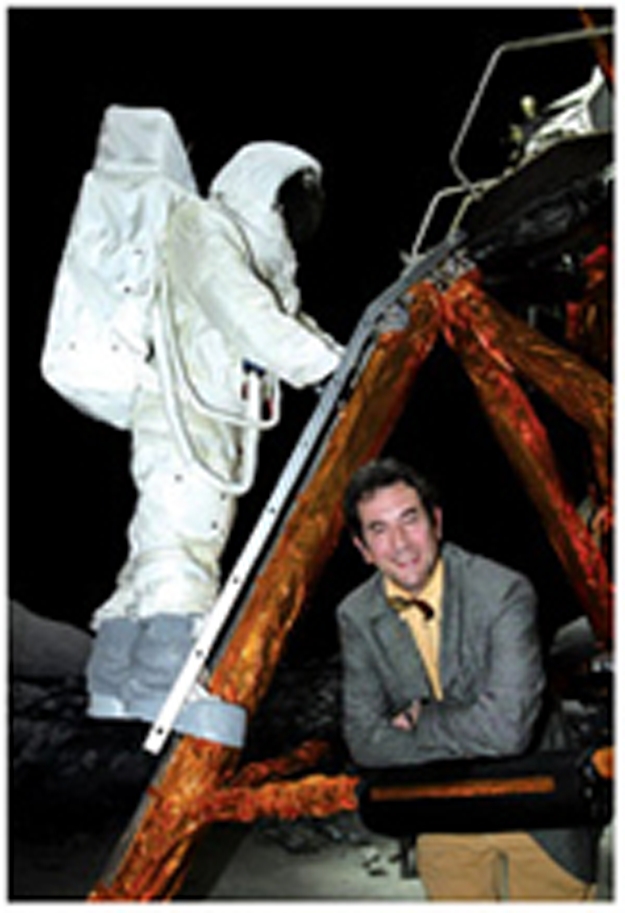
Marc Heppener
References
- Alkner BA, Tesch PA (2004) Efficacy of a gravity-independent resistance exercise device as a countermeasure to muscle atrophy during 29-day bed rest. Acta Physiol Scand 181: 345–357 [DOI] [PubMed] [Google Scholar]
- Ayre M, Zancanaro C, Malatesta M (2004) Morpheus: hypermetabolic stasis in humans for long term space flight. J Brit Interplan Soc 57: 325–339 [Google Scholar]
- Blackstone E, Morisson M, Roth MB (2005) H2S induces a suspended animation-like state in mice. Science 308: 518. [DOI] [PubMed] [Google Scholar]
- Choukèr A et al. (2002) Effects of confinement (110 and 240 days) on neuroendocrine stress response and changes of immune cells in men. J Appl Physiol 92: 1619–1627 [DOI] [PubMed] [Google Scholar]
- Clarke AH, Grigull J, Müller R, Scherer H (2000) The three-dimensional vestibulo-ocular reflex during prolonged microgravity. Exp Brain Res 134: 322–334 [DOI] [PubMed] [Google Scholar]
- Cogoli A (2002) Cell Biology and Biotechnology in Space. Amsterdam, The Netherlands: Elsevier [Google Scholar]
- Crawford I, Cockell C (2005) The scientific case for human space exploration. J Astron Geophys 46: 1.17–1.18 [Google Scholar]
- DiPrampero PE, Narici MV (2003) Muscles in microgravity: from fibres to human motion. J Biomech 36: 403–412 [DOI] [PubMed] [Google Scholar]
- European Science Foundation (2008) A Science-Driven Scenario for Space Exploration. Strasbourg, France: European Science Foundation [Google Scholar]
- Friml J, Wisniewska J, Benkova E, Mendgen K, Palme K (2002) Lateral relocation of auxin efflux regulator PIN3 mediates tropism in Arabidopsis. Nature 415: 806–809 [DOI] [PubMed] [Google Scholar]
- Häder D, Hemmersbach R, Lebert M (2005) Gravity and the Behaviour of Unicellular Organisms. Cambridge, UK: Cambridge University Press [Google Scholar]
- Heer M, Boese A, Bäcker N, Zittermann A, Smith SM (2004) Moderate hypocaloric nutrition does not exacerbate bone resorption during bed rest. FASEB J 18: 478–484 [Google Scholar]
- Iwasaki KI, Sasaki T, Hirayanagi K, Yajima K (2001) Usefulness of daily +2Gz load as a countermeasure against physiological problems during weightlessness. Acta Astronaut 49: 227–235 [DOI] [PubMed] [Google Scholar]
- LeBlanc A, Schneider V, Shakelford L, West S, Oganov V, Bakulin A, Varoni L (2000) Bone mineral and lean tissue loss after long duration space flight. J Musculoskelet Neuronal Interact 1: 157–160 [PubMed] [Google Scholar]
- Marie PJ, Jones D, Vico L, Zallone A, Hinsenkamp M, Cancedda R (2000) Osteobiology, strain, and microgravity: part I. Studies at the cellular level. Calcif Tissue Int 67: 2–9 [DOI] [PubMed] [Google Scholar]
- McKay CP, Marinova MM (2001) The physics, biology, and environmental ethics of making Mars habitable. Astrobiology 1: 89–109 [DOI] [PubMed] [Google Scholar]
- Oeltgen PR, Nuchols PA, Nilekani SP, Spurrier WA, Su TP (1988) Further studies on opioids and hibernation: delta opioid receptor ligand selectively induced hibernation in summer-active ground squirrels. Life Sci 43: 1565–1574 [DOI] [PubMed] [Google Scholar]
- Perbal G, Driss-Ecole D (2003) Mechanotransduction in gravisensing cells. Trends Plant Sci 8: 498–504 [DOI] [PubMed] [Google Scholar]
- Rittweger J, Frost HM, Scheissl H, Ohshima H, Alkner B, Tesch P, Felsenberg D (2005) Muscle atrophy and bone loss after 90 days' bed rest and the effects of flywheel resistive exercise and pamidronate: results from the LTBR study. Bone 36: 1019–1029 [DOI] [PubMed] [Google Scholar]
- Scheld K, Zimmermann A, Heer M, Herzog B, Mika C, Drummer C, Stehle P (2001) Nitrogen metabolism and bone metabolism markers in healthy adults during 16 weeks of bed rest. Clin Chem 47: 1688–1695 [PubMed] [Google Scholar]
- Stein TP, Donaldson MR, Leskiw MJ, Schluter MD, Baggett DW, Boden G (2003) Ranched-chain amino acid supplementation during bed rest: effect on recovery. J Appl Physiol 94: 1345–1352 [DOI] [PubMed] [Google Scholar]
- Vecchio L, Baldelli B, Malatesta M, Biggiogera M (2003) Mimicking hibernation: a light and electron microscope study on in vitro models. Eur J Clin Invest 33: S49 [Google Scholar]
- Verbanck S, Linnarsson D, Prisk GK, Paiva M (1996) Specific ventilation distribution in microgravity. J Appl Physiol 80: 1458–1465 [DOI] [PubMed] [Google Scholar]
- Vermeer K, Wolf J, Craciun AM, Knapen MH (1998) Bone markers during a 6-month space flight: effects of vitamin K supplementation. J Gravit Physiol 5: 65–69 [PubMed] [Google Scholar]
- Viguier A, Clément G, Trotter Y (2001) Distance perception within near visual space. Perception 30: 115–124 [DOI] [PubMed] [Google Scholar]
- Watanabe Y, Ohshima H, Mizuno K, Sekiguchi C, Fukunaga M, Kohri K, Rittweger J, Felsenberg D, Matsumoto T, Nakamura T (2004) Intravenous pamidronate prevents femoral bone loss and renal stone formation during 90-day bed rest. J Bone Miner Res 19: 1771–1778 [DOI] [PubMed] [Google Scholar]



